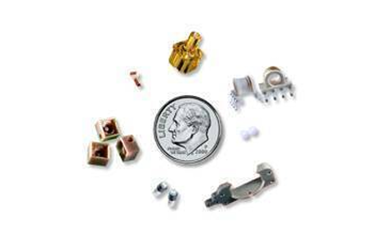Optimizing Outcomes Through Micro Molding – An Expert Perspective

For companies that are exploring the possibilities that exist for miniaturization of plastic parts and components, there are some seemingly daunting obstacles that exist, not least the vagaries of the micro molding process itself. Molding at the micro scale renders redundant many of the “rules” associated with macro molding, and the process requires a completely new perspective in terms of such considerations as rheology, tooling, gating, and handling and assembly to name but a few.
Because of this, most OEMs that embark on a micro molding product development process engage with specialist micro molding experts that can navigate inherent issues, and through experience have honed the art of micro molding to optimise manufacturing outcomes. However, not all micro molding companies are the same, and in this Q&A interview, Craig Tappe, Sales Engineer at Accumold discusses various aspects of the micro molding process, and discusses why it is important to ensure that when short-listing your preferred suppliers, the correct questions are asked.
Q. What is design for micro molding (DfMM) and how does it play a crucial role in the success of micro molding project?
CT. DfMM refers to the process of developing and optimizing designs specifically tailored for micro-scale injection molding. Micro molding is a highly precise manufacturing technique used to produce miniature plastic parts with intricate details and dimensions in the micrometer range. Designing for micro molding involves considering factors such as material selection, part geometry, tooling requirements, and process limitations unique to micro-scale production. The goal is to create designs that maximize manufacturability, ensure part quality, and enhance functionality within the constraints of micro molding technology. Attention to detail, such as minimizing wall thickness variations, incorporating proper gating and venting, and addressing potential issues related to part ejection and moldability, is crucial in achieving successful micro molding outcomes.
Get unlimited access to:
Enter your credentials below to log in. Not yet a member of Med Device Online? Subscribe today.
